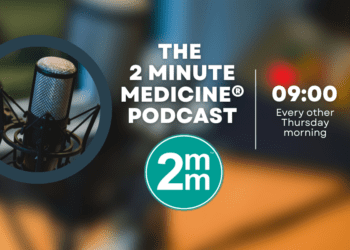Increased blood–urea–nitrogen-to-albumin ratio associated with increased mortality in coronavirus disease
1. Increased blood–urea–nitrogen-to-albumin ratio was associated with increased risk of in-hospital mortality among patients with COVID-19.
Evidence Rating Level: 2 (Good)
Blood–urea–nitrogen-to-albumin ratio (BAR) is recognized as a novel short-term prognostic index, and elevated BAR has been linked to worse prognosis among patients hospitalized for coronavirus disease 2019 (COVID-19). However, research on the relationship between BAR and in-hospital mortality associated with COVID-19 is limited. This retrospective cohort study thus examined the association between BAR and in-hospital mortality in patients with COVID-19 in China. This study included patients over 18 years old who were hospitalized with COVID-19 from December 2022 to March 2023. In-hospital mortality was characterized as any death occurring during patient hospitalization or within 24 hours of discharge from the hospital. BAR (mg/g) was calculated using the initial serum blood–urea–nitrogen (mg/dL) divided by serum albumin (g/dL). Patients were divided into tertiles based on BAR values: tertile I (BAR, 1.134–3.932 [n = 341]); tertile II (BAR, 3.944–5.793 [n = 343]); and tertile III (BAR, 5.811–48.3 [n = 343]). In total, 1,027 patients were included in this study (mean [SD] age, 72.1 [13] years; 569 males [55.4%]), of whom 117 patients (11.4%) died from various causes during hospitalization. Patients in the highest BAR tertile had a higher risk of in-hospital mortality (adjusted hazard ratio [HR] 2.44 [95% confidence interval CI 1.24–4.79]) compared to those in the lowest tertile. Additionally, for every 1-unit increase in BAR, the risk of in-hospital mortality increased by 6% (adjusted HR 1.06 [95% CI 1.03–1.08]). Stratified and interaction analyses found that the association between BAR and in-hospital mortality due to COVID-19 remained consistent across various subgroups, including age, sex, COVID-19 severity, hypertension, coronary heart disease, and diabetes mellitus. Overall, this study found increased BAR to be associated with an increased risk of in-hospital mortality among patients with COVID-19. As this study mainly focused on patients with the Omicron variant of SARS-CoV-2, future studies are needed to confirm study findings.
Image: PD
©2025 2 Minute Medicine, Inc. All rights reserved. No works may be reproduced without expressed written consent from 2 Minute Medicine, Inc. Inquire about licensing here. No article should be construed as medical advice and is not intended as such by the authors or by 2 Minute Medicine, Inc.



![Oral amoxicillin as effective as injectable benzylpenicillin-gentamicin for infants with infection in which referral not possible [AFRINEST Trial]](https://www.2minutemedicine.com/wp-content/uploads/2015/04/NOVAMOXIN_antibiotic-350x250.jpg)



